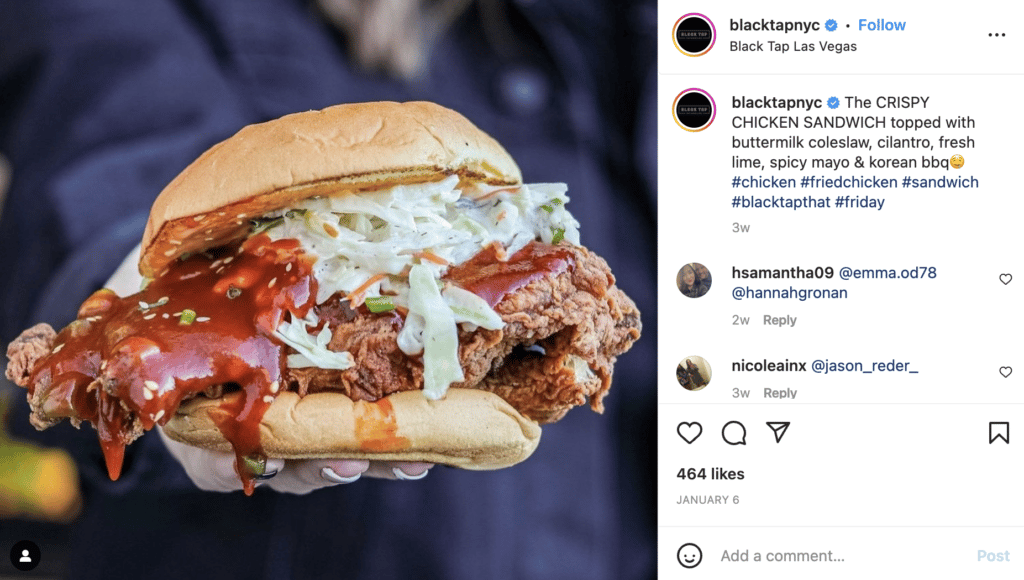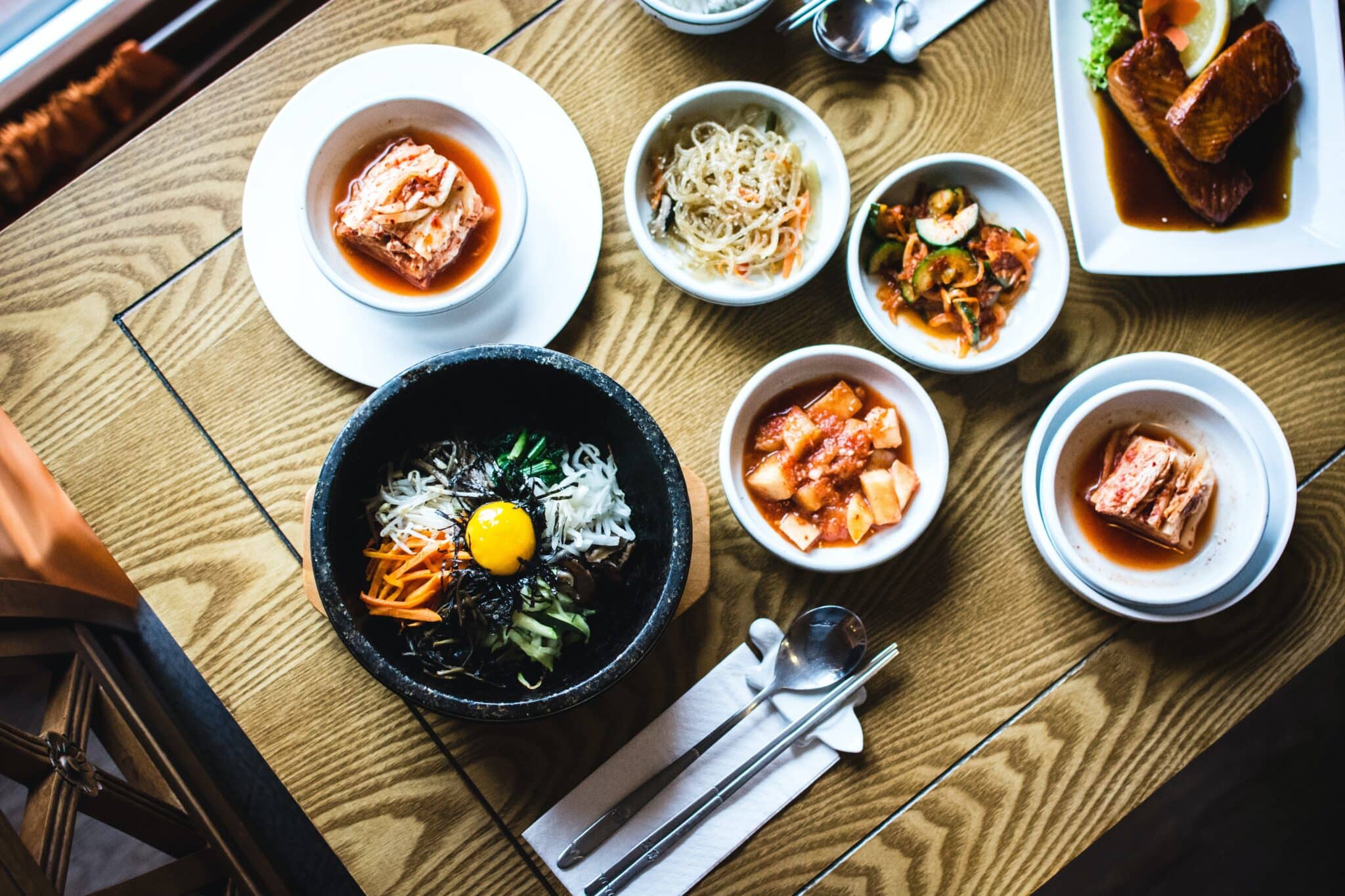We all need a little inspiration every and now then so, we’ve compiled 12 tips with examples for you to get started! And, if you haven’t begun your social media journey for your restaurant just yet, that’s ok – it’s never too late to dive in!
Table of contents
- Show us behind-the-scenes
- Create a consistent voice
- Respond to online reviews
- Use social media to drive email sign ups
- User generated content
- Spotlight your employees
- Ask questions to engage followers
- Host social media contests or giveaways
- Spotlight your vendors
- Ditch Twitter for TikTok
- Work with Influencers
- Post high quality food photos
Show us behind-the-scenes
Why it’s important: Today, restaurant patrons are always eager to witness how their food is crafted in the kitchen — so much so that YouTube channels dedicated to showcasing a restaurant’s signature dish have become increasingly popular. If you want to engage your customers, it’s simple: share photos or videos of your kitchen staff creating food on social media. Your team is already producing the content that people crave; all you have to do is capture it!
Create a consistent voice
Why it’s important: Creating a consistent voice and overall social media aesthetic that is on brand with your restaurant is extremely important. Consider social media your first impression to the world. Most people will check your social media before making a reservation. They want to get an idea of the vibe, the food, and any photo ops. Here are a couple of my favorite examples:

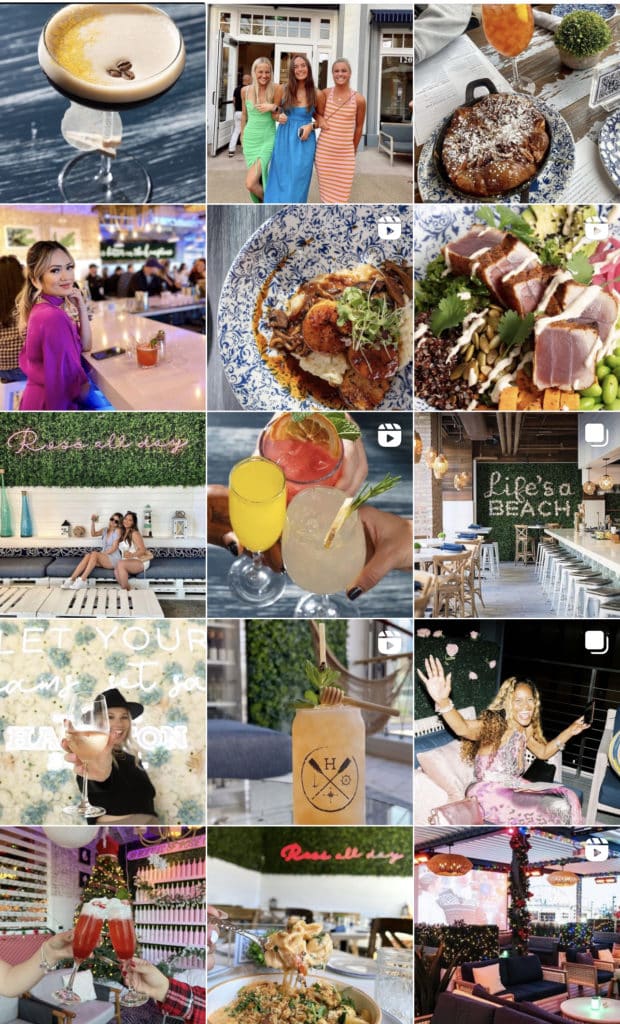
Respond to online reviews
Why it’s important: It’s important to respond to both negative and positive reviews. With positive reviews, it’s always great to let people know how much you appreciate them. And, while it’s not always easy to respond to negative reviews and/or comments, it’s equally (if not more) important. If it’s a negative public comment, I usually recommend taking the conversation to private messages. But, if you do that, ALWAYS comment with something like “We sent you a DM!” so that other people can see that you are responsive. With public reviews, I would recommend responding publicly.
Use social media to drive email sign ups
Why it’s important: When a customer provides you with their email, it’s an incredible opportunity to foster and build your relationship. Through restaurant email marketing, like sending coupons, discounts for birthdays, or special event notifications – the potential is endless! Email newsletters are one of the most effective ways to create loyalty among customers and ensure repeat visits.
User generated content
Why it’s important: In essence, your most devoted followers are essentially doing 95% of the work for you by promoting your business through photos or word-of-mouth. By reposting content from your customers, you not only keep in touch with them but also demonstrate to other guests that you value your community. Additionally, when others hear about how great your business is directly from their peers instead of just hearing it from you—it makes a world of difference! Food lovers are excited to share about restaurants on social media. According to ReviewTrackers, “research also found that customers are 43 percent likely to leave a review after a positive experience at a restaurant. On the other hand, after a negative experience, customers are 46.7 percent likely to leave a review.”
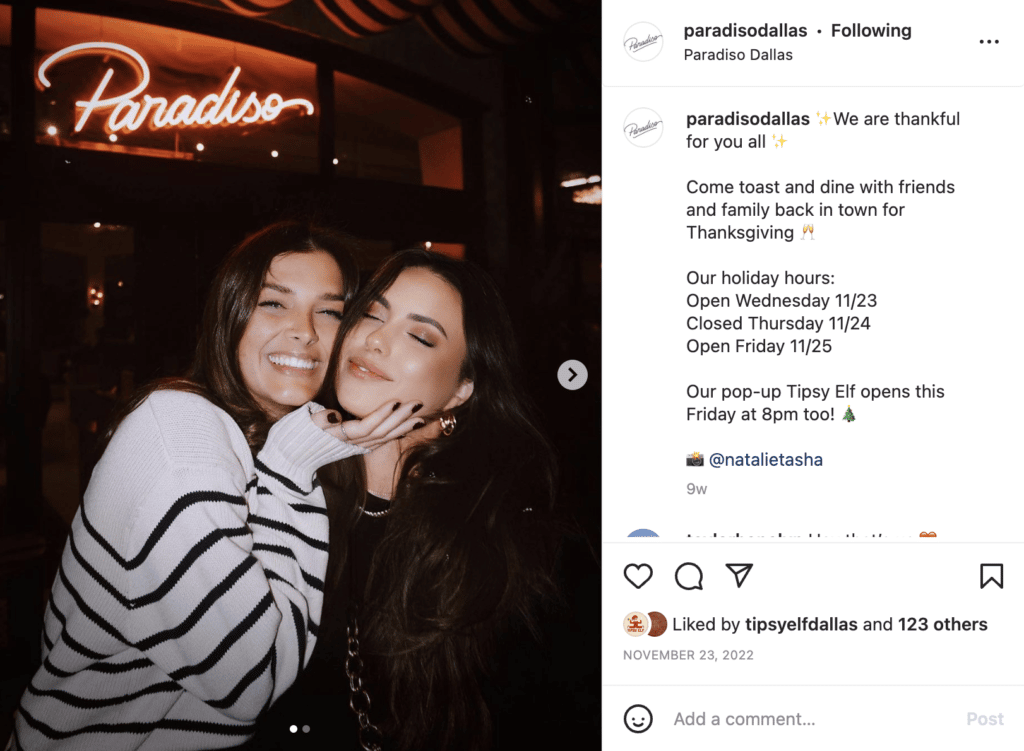
Spotlight your employees
Why it’s important: Highlighting the real people who make up your restaurant is an outstanding way to establish a personal connection with customers. Strengthening your connection to followers by giving them a peek into the inner workings of your restaurant and its staff can be accomplished through humorous anecdotes or ‘behind-the-scenes’ images/videos. Doing this allows customers to feel more connected with the people that make it all possible! Here are a couple of my favorite examples:
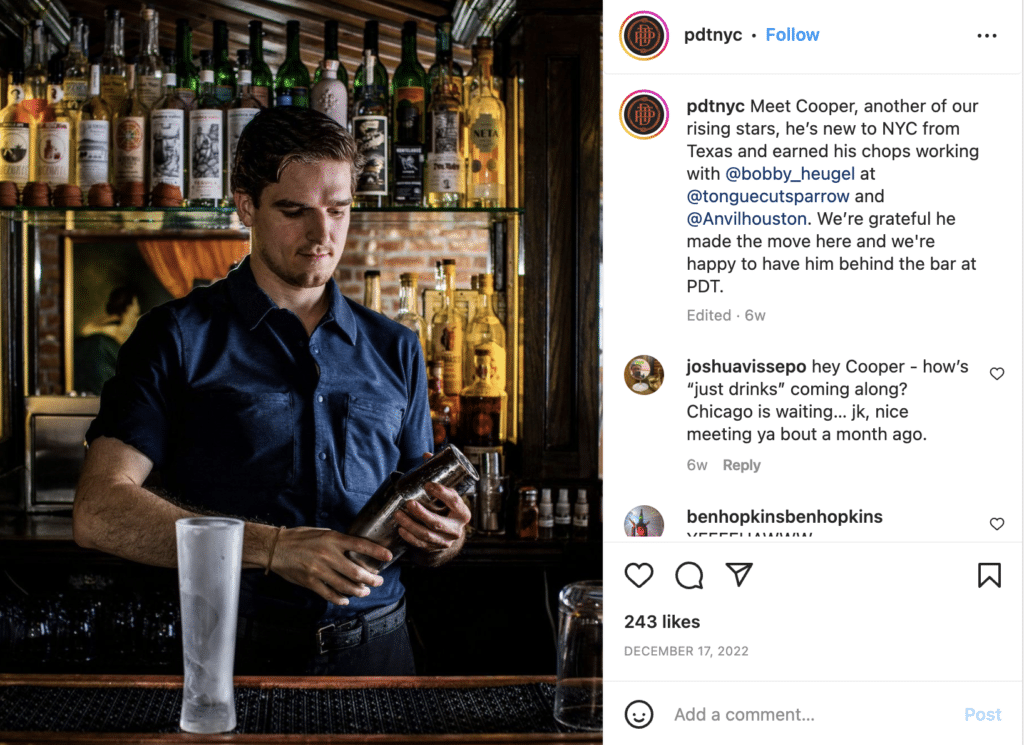
Ask questions to engage followers
Why it’s important: Social media is not just about informing your followers of the latest news from your restaurant; it’s also essential to pay attention and respond. Establishing an open line of communication with your customers is easy and efficient via social media platforms such as Facebook, TikTok, and Instagram. Polls and questions are interactive, entertaining elements of Instagram Stories that increase engagement with your followers.
Host social media contests or giveaways
Why it’s important: Contests and giveaways are both great ways to grow your following and engage with your customers. By hosting photo, caption or friend-tagging competitions, the restaurant is fostering relationships with their guests and stimulating engagement online. Giveaways are a great way to raise brand awareness and grow your following. If you can partner with an influencer that aligns with your brand, even better!
Spotlight your vendors
Why it’s important: Knowing where ingredients are sources, is hugely popular among restaurant goers. By showing support for your local vendors, you can increase engagement and attract new customers. This is also a great way to show appreciation for your vendors and help draw awareness to them as well.
Ditch Twitter for TikTok
Why it’s important: We will almost always recommend ditching Twitter. It is not what it used to be and, honestly, is a place for either arguing, weather updates, and sports play-by-play. If you have the capacity, it would be best to add TikTok. TikTok is a great platform to showcase your personality, recipes, hop on fun trends, and so much more!
Work with Influencers
Why it’s important: Influencer marketing is huge and a great way to gain followers, customers, and overall brand awareness. People follow influencers that they trust and view them as industry leaders – where that be travel, fashion, beauty, or food. I tend to prefer working with smaller/micro influencers but, no matter which direction you go, it’s important to do your research, make sure they have an engaged following and align with your brand.
Post high quality food photos
Why it’s important: We eat with our eyes first! Your food photos should be well lit and literally look like you can taste and smell it from your phone. And never use stock photos. Below are some examples that I absolutely love!

